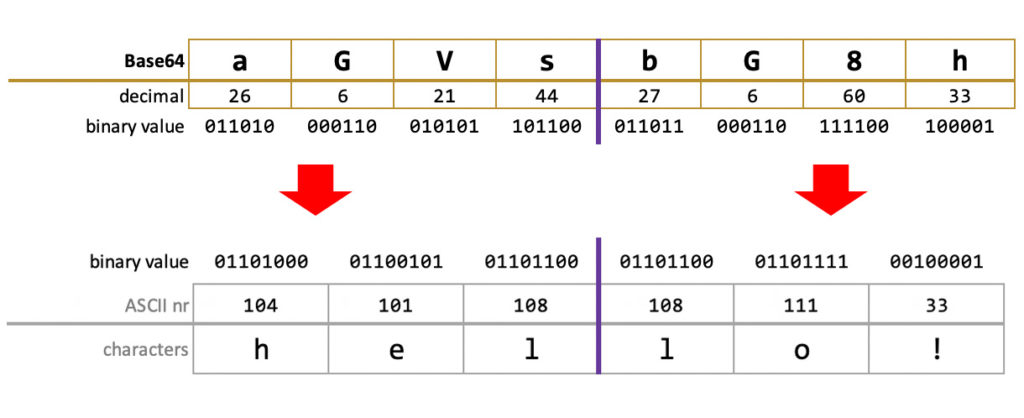

In the following example, the first select doesn't specify url_safe, however the second select does specify url_safe. Base64 is a group of similar binary-to-text encoding schemes that represent binary data in an ASCII string format by translating it into a. SELECT BASE64_ENCODE (CAST ('hello world' as varbinary))

The string must first be casted to a varbinary. In the following example, a string is base64 encoded. In each case, the database default collation is used. This function doesnt add any new line characters. The URL-safe output uses the base64url alphabet of RFC 4648 Table 2 and doesnt add padding. SELECT Base64_Encode(0xA9) as "Encoded © symbol" The encoded string alphabet is that of RFC 4648 Table 1 and may add padding. In the following example, simple varbinary is base64 encoded. are compatible with the lower 127 ASCII chart (ISO-8859-1, Windows-1252, UTF-8, etc). If url_safe is true, the base64url string that is generated is incompatible with SQL Server's XML and JSON base64 decoders. Provides Base64 encoding and decoding as defined by RFC 2045. For more information on the supported collations in Microsoft Fabric, see Tables. In each case, the database default collation is used. Base64 alphabet contains 64 characters Basic ASCII which are used to encode data. It includes a table, base64, which contains two functions, encode() and decode() which, respectively, generate a base64 encoding of a blob or string. This function doesn't add any new line characters. The URL-safe output uses the base64url alphabet of RFC 4648 Table 2 and doesn't add padding. The encoded string alphabet is that of RFC 4648 Table 1 and may add padding.
#Base64 encoding table series
This series of bytes is then fed to base64 encoding algorithm that produces the base64 output. The Base64 Alphabet contains 64 basic ASCII characters which are used to encode data. We support UTF8, UTF16, UTF32, UCS2, and UCS4 encoding formats, as well as Big Endian and Little Endian byte order formats for the multi-byte formats (UTF16, UCS2, UTF32, and UCS4). And why have I modified it Well, because it didn't seem appropriate to me that I should work with binary data stored within std::string object ) base64. Convert Base64 string to Xstring using ‘SCMSBASE64DECODESTR‘. 13 Answers Sorted by: 135 Here's my modification of the implementation that was originally written by Ren Nyffenegger. Function Modules for Base64 Decoding: Decoding is a three-step procedure. Then use ‘SCMSBASE64ENCODESTR‘ to convert Xstring to Base64. Base64 (boolean urlSafe) Creates a Base64 codec used for decoding (all modes) and encoding in the given URL-safe mode. First, as Unicode can be stored in computer memory in many different ways, it's encoded to bytes in the encoding format that you have chosen. First, convert string to Xstring using ‘SCMSSTRINGTOXSTRING‘. Constructors Constructor and Description Base64 () Creates a Base64 codec used for decoding (all modes) and encoding in URL-unsafe mode.

Encoding your Unicode data to base64 is a two-step process.

If only one or two bytes are encoded, then the "=" sign is used as the fill character at the end so that there were 4 characters in the output. In base64, every 3 bytes of data are encoded as 4 characters. The information encoded in base64 is represented by a set of bytes using 52 Latin characters and 10 numbers – A-Z, a-z, 0-9, and 2 additional symbols – "/" and "=". Base64 encoding is commonly used when there is a need to transmit binary data over media that do not correctly handle binary data and is designed to deal with textual data belonging to the 7. The Base64 online converter supports both functions of the algorithm on same page. It represents binary data in a printable ASCII string format by translating it into a radix-64 representation. It lets you share your data on systems that don't understand Unicode. Base64 is a binary-to-text encoding scheme. Base64 is a data encoding standard that uses only 64 ASCII symbols. This utility converts your Unicode letters, numbers, symbols, emojis, and other characters to base64 encoding. The characters used in the base64 mapping table are only those deemed safe for MIME.


 0 kommentar(er)
0 kommentar(er)
